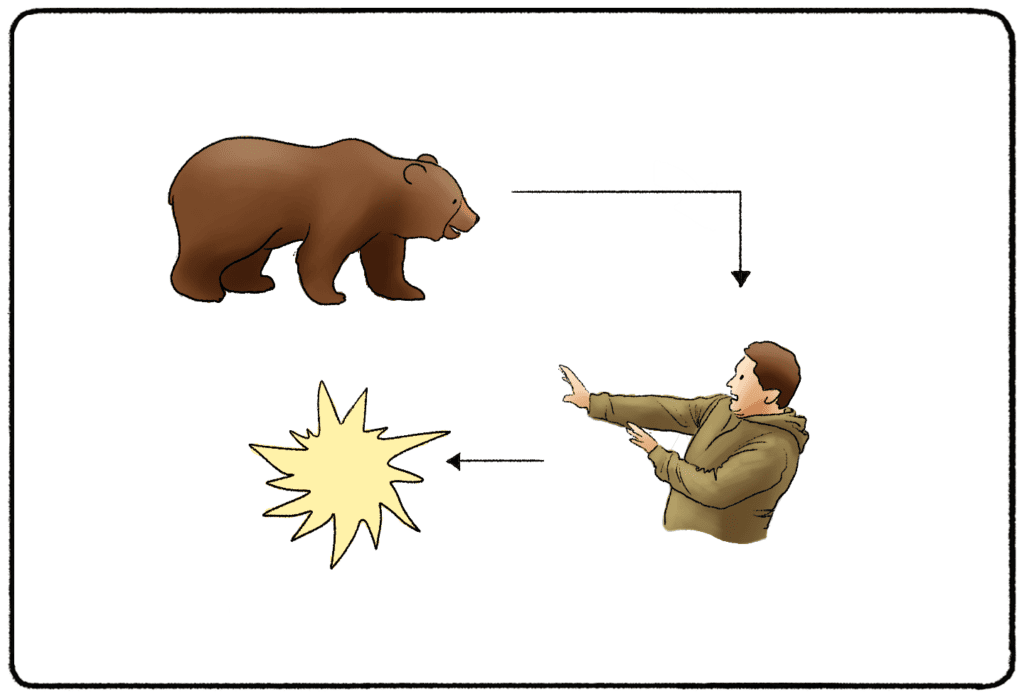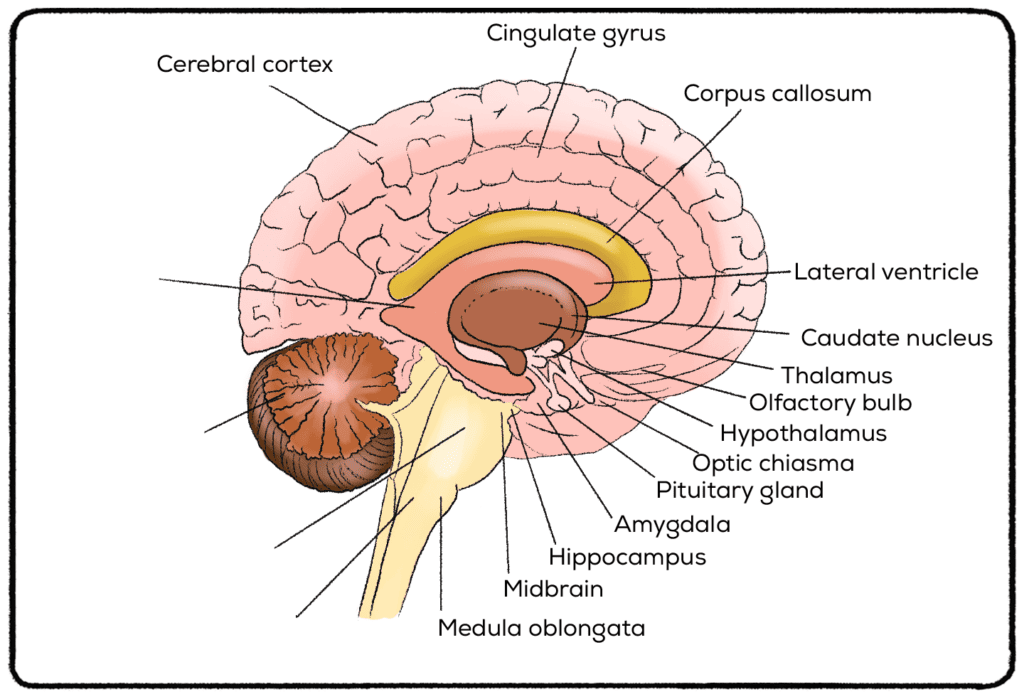Psychologists have debated over “what comes first” when we experience extreme emotions. Does our heart rate increase, and our sweat starts dripping because we feel nervous? Or do we start to feel nervous because we are experiencing all of these physical reactions? The Cannon-Bard Theory is one of many theories that attempt to answer this question.
What Is The Cannon-Bard Theory?
The Cannon-Bard Theory says that our emotional and physiological responses are simultaneously separate processes. One is not necessarily caused by the other, but the same stimulus causes both. Walter Cannon and Philip Bard developed it in the 1920s.
Cannon and Bard looked at the brains of different humans and animals who had trouble processing emotion. They discovered that the thalamus played a big role. Their theory explained how different brain parts take in information and respond to it.

How Does the Cannon-Bard Theory Work?
Sensory information goes to the thalamus. The thalamus then sends a message to one of three places: the autonomic nervous system (ANS,) amygdala, or cerebral cortex.
The autonomic nervous system controls the body functions we do not consciously control. These functions include heart rate, unconscious breathing, sweating, etc. If the ANS gets the “go-ahead” from the thalamus, it will ramp up any of these bodily functions.
At the same time, the thalamus may be sending information to the amygdala. This area of the brain controls our emotional responses. We can thank the amygdala for fear, excitement, nervousness, or joy.
The cerebral cortex controls our conscious thought. This part of the brain will say, “Hey! I guess I feel nervous.” or “Whoa, I’m sweating a lot.”
These processes are happening simultaneously and may vary from person to person.

Examples of Cannon-Bard Theory
Teachers help students slow down breathing and calm their minds in yoga and meditation. The idea is to counteract the “fight or flight” reflex we feel daily.
The Cannon-Bard Theory says we simultaneously experience physical and emotional reactions to situations. When the fight or flight reflex is triggered, our heart rate skyrockets, our palms begin to sweat, and we find ourselves in a bad mood. But with deep breathing, that reflex goes away. No wonder everyone looks so happy after a yoga class!
The James-Lange Theory
The Cannon-Bard Theory was a direct response to the James-Lange Theory. This was the prevailing theory before Walter Cannon and Philip Bard came around. The James-Lange Theory states that we experience emotions as a response to psychological reactions in the body.
For example, let’s say you are getting up to speak in front of a class. Your heart starts to pound. Your palms get sweaty. You feel nauseous. According to the James-Lange Theory, this process happens first. Then, we assign an emotion to these sensations. You’re nervous.
Until the 1920s, this was the biggest theory in studying our emotions. Then Cannon and Bard came around.
Criticism of the James-Lange Theory
Walter Cannon and Philip Bard had a few problems with the James-Lange Theory.
First, there are a lot of psychological responses that don’t necessarily cause emotions. We don’t necessarily feel an emotion every time we need to go to the bathroom, right?
Second, sometimes the same physiological response could cause multiple emotions. Your heart rate may pound because you’re nervous or because you’re excited. You may start to sweat because you’re nervous or because it’s hot outside and you don’t have a strong emotional response to the heat.
Cannon and Bard also had a problem with the timing. If bodily responses cause emotional responses, why do our emotions subside faster than our body returns to homeostasis?
With these criticisms in mind, they developed their theory.
Criticisms Of Cannon-Bard Theory
But this theory isn’t without its critics either. Let’s go back to the idea of yoga and meditation. Practitioners use deep breathing and physical practices to change their emotional state. Similarly, studies have shown that you can change your emotions by making certain facial expressions.
These studies are often used to critique the Cannon-Bard Theory, arguing that physiological changes do have some impact on our emotions. Theories like the Schachter-Singer Theory attempt to bring together the James-Lange and Cannon-Bard theories. This theory says that while physical reactions occur before emotions, these reactions may cause different emotions.
How to Remember Different Theories of Emotion
There are a lot of hyphenated names and theories to remember, but memory tricks can help you if you are studying for an exam. Reddit user MickeyEliza had this to say about the Cannon-Bard and Schachter-Singer theories:
"I remember Cannon-Bard by thinking about how if I took a picture (Cannon camera) it would capture both happening at the same time. Then I think about Schachter-Singer by thinking about how you have to THINK while you SING (lyrics, tone, etc.). That's how I remember that one has cognitive processing of the emotion too. I don't know how helpful this is but it's how I remember them  "
"
There Is No Right or Wrong Answer...Yet.
The Schachter-Singer Theory was developed over four decades after the Cannon-Bard Theory, yet it’s not the end-all, be-all answer to the study of emotions. There is still a lot of research that needs to be done on the way that we process, recognize, and respond to emotions. However, the Cannon-Bard Theory was revolutionary and remains important in psychology and neurobiology.



